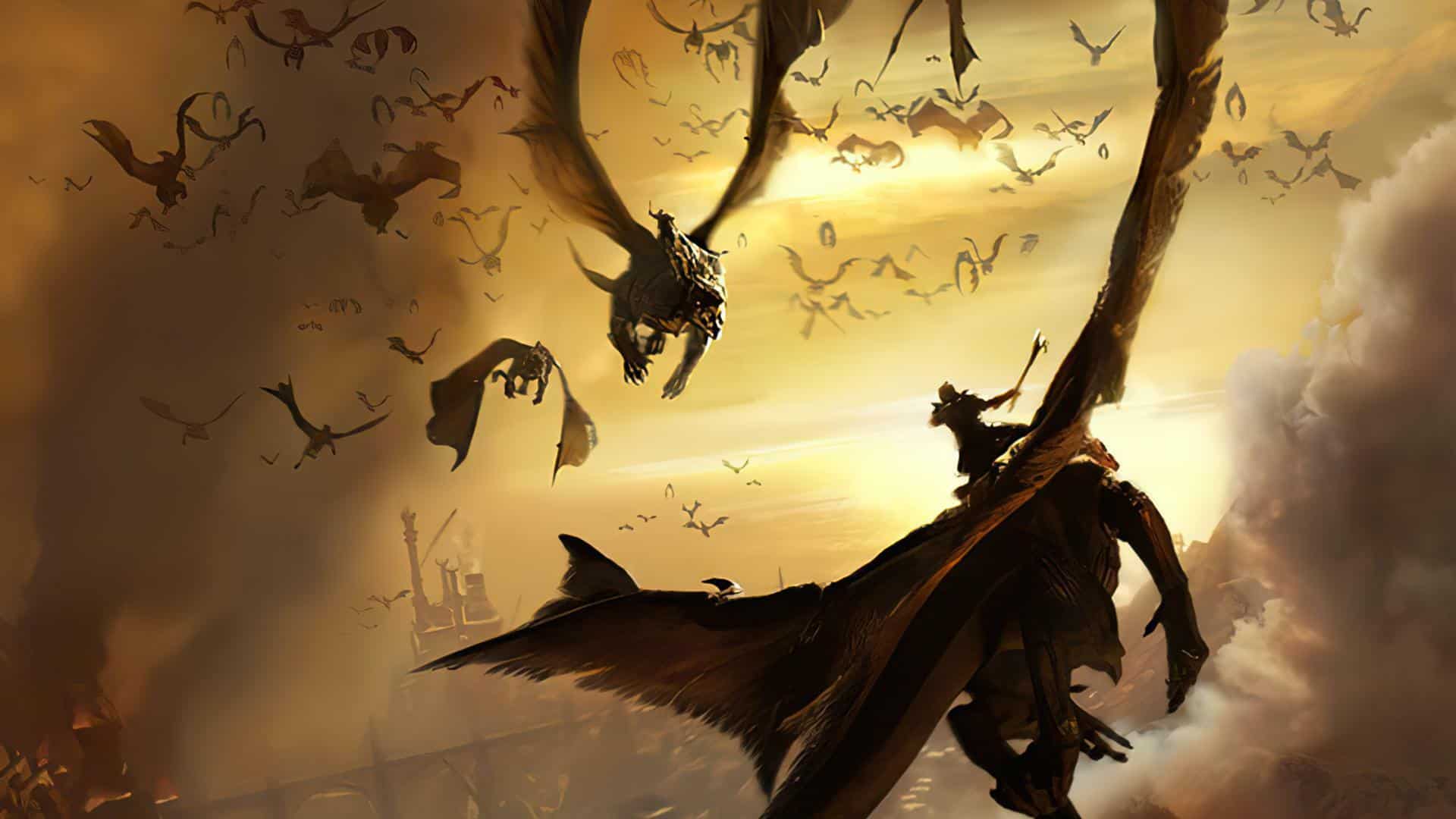You can trust VideoGamer. Our team of gaming experts spend hours testing and reviewing the latest games, to ensure you're reading the most comprehensive guide possible. Rest assured, all imagery and advice is unique and original. Check out how we test and review games here
Sony’s dragon riding fantasy epic Lair is a game that held so much hope. When it first emerged some dazzling screenshots made enchanted gamers catch their breath, and early optimism across the industry tagged it as a great hope for the late blossoming of the then underwhelming PlayStation 3.
Now, as Sony’s glossy black gaming goliath gathers steam, and its catalogue of worthwhile titles increases, Lair finally touches its blood-soaked talons down on the console, and sadly, the results are largely disappointing. If Lair teaches us anything, it is that good ideas and good screenshots don’t necessarily work in motion.
You’d be forgiven for hoping for the best of course. A dragon riding game for any format is an exciting enough idea, but when handled by the developers of the masterful arcade aerial combat series Rogue Squadron, and released for a new-gen machine, most would hope for something extraordinary.
Unfortunately, the second you get a Sixaxis controller in your hands, it’s clear that Factor 5 aren’t as capable with the reigns of a giant scaly beast as they are with the helm of an X-Wing. With no option for analogue control, the only way to steer your colossal winged monster is through the motion sensitivity of the PlayStation3’s controller, and like most of the game, the results are sub-standard.
While gliding left and right, and ascending and dipping works fine, any more complex movements would be laughable in execution, if they weren’t so infuriating. Jerking the controller up can trigger a 180 turn, whilst thrusting it forward launches you into a boost, but all too often the two are easy to confuse. The lock on system is near unusable, and deft and delicate flying feels like a distant dream as you progress through the levels.
The real problems though, lie not with the sporadically reliable Sixaxis control, which makes the scaly dog fighting disappointingly clumsy, but with the game’s structure itself. Lair’s levels become very grossly repetitive extremely quickly, and too many feel like soulless facsimiles of Rogue Squadron’s missions.
That would be fine, except for the fact that the themes and settings in Lair simply fail to match those in Factor 5’s seminal acrobatic shooter. Escorting a huge, hulking spaceship as you tear through the cosmos, surrounded by laser fire, crackling radio transitions and a twinkling neon HUD, feels action packed and absorbing. By comparison, slowly escorting a lumbering explosive manta or similar creature from the realm of ancient fantasy just feels a little empty.
Which highlights the importance of the imbalance between Lair’s genre and theme. The epoch and style of a world of dragons and brave knights doesn’t sit well with radar, elaborate HUDs, targeting reticules, increased multiple weapons and cloaking devices, which all could have brought diversity and excitement to Lair.
Still, that is no excuse for Lair’s shortcomings. Many of those gameplay mechanics, with a little creativity, could have easily been reinvented as magical abilities, and so many games set in an era before electricity have come up with cunning or even explicit alternatives to the likes of radar.
The missions too are also rather cumbersome, and regularly drawn out, with individual tasks oft repeated, and objective outlines sometimes startlingly unclear. Add to that some awkward combat controls, like the apparently pointless, button stabbing QTE’s when you engage in close combat, and the senseless technique to dive at your foes in mid-flight, and you have a text book formula for thwarted enthusiasm, especially when this release held so much promise.
That promise comes not only from the early artwork from the game, but because throughout Lair does keep you entranced, though not through its quality. Somehow it constantly hints that there is a good game about to reveal itself, but every time it reignites your hope and prods at your faith, it lets you down again. Take the moment you realise you can land and roam the terra firma, spewing fire into packs of troops, slashing at them in droves. Regrettably, you’ll quickly learn that human soldiers are no threat at all, and as such may be diminutive mannequins, while anything bigger is pointless to tackle with claws firmly on the soil.
Still, Lair has its good points. Despite some odd lighting choices, which bleach and wash out the action at times, overall the visuals are very nice indeed. The enemy creatures do let down the graphical polish at times, but the protagonist dragons themselves are sumptuous and detailed to the extreme. The cut-scenes too are very nice indeed, and though the in-game environments are milked for as much gameplay time as possible, they are fantastic to take in, and at times arouse memories of the Lord of the Rings movies’ vast cities. The sound too is gorgeous, thanks largely to an impressive orchestral score, though on a muscular surround sound system each audio effect and spoken word is rich and distinct.
Despite such audiovisual wizardry, all the technical sheen the PlayStation3 can muster can’t mask a dud game, and as a result Lair is little more than verisimilitude; a dated and flawed game concept riddled with ungainly mechanics and an inept control system, dressed up as a beautiful, powerful epic of an interactive experience, much like a dragon with the heart of a coward and the strength of a lamb.
/https://oimg.videogamer.com/images/838f/lair_13.jpg)
/https://oimg.videogamer.com/images/3cd5/lair_17.jpg)






